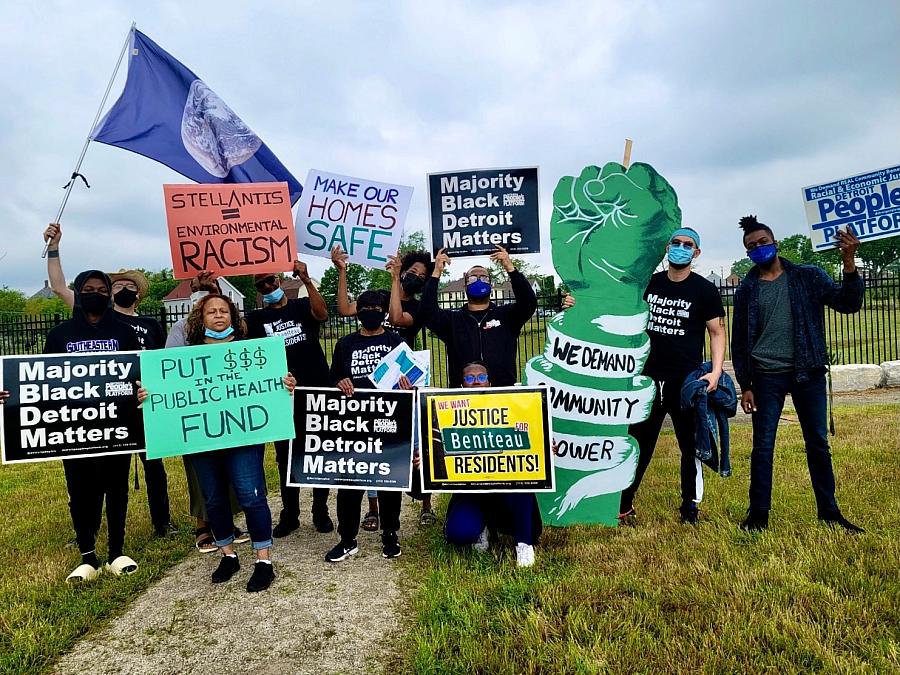Detroit’s Black residents are choking on industrial air pollution, with little help from the state

Detroit residents protest air pollution stemming from auto manufacturing.
(Photo via Jena Brooker)
Feeling short of breath, a resident on Detroit’s east side found herself in the emergency room in the spring of 2021 and was prescribed an inhaler for asthma for the first time in her life.
She had never had issues with her respiratory health until an automotive plant, Stellantis, formerly Fiat Chrysler, expanded in 2021, practically into her backyard. With the expansion, the resident and many of her neighbors say their health has worsened.
Trouble breathing, adult onset asthma, coughing fits, and headaches have afflicted residents in the neighborhoods surrounding the plant, which produces Jeep Grand Cherokees and Dodge Durangos. It’s been an issue for offices in the neighborhood, as well, which have reported sending employees home for the day due to strong odors.
In order to expand in Detroit, Stellantis couldn't add emissions to the Southeast Michigan region. As a solution, the company reduced the amount of pollution it was emitting in a mostly white neighborhood in nearby Warren, Michigan, allowing the company to increase emissions in a neighborhood on Detroit’s east side, a mostly Black community already overburdened with pollution.
Before the expansion, the asthma rate in the impact zone around the plant already was three times higher than the state average, and two times higher than Detroit’s average. Since the expansion, residents have filed at least 95 complaints with the state, and the company has received seven air quality violations, but pollution emissions continue above limits that the company was authorized to produce in its permit.
To date, resident complaints are anecdotal. By comparing emissions data and changes in the health of residents surrounding the facility, my 2022 Data Fellowship project will seek to illuminate the concrete impact of Stellantis’ additional emissions since they expanded their plant in 2021. Using health indicators like increases in emergency room visits due to asthma and missed days of school due to asthma, I plan to see how the increase in emissions has had real impacts on health, productivity, and quality of life.
I have been covering residents’ protests against the plant since before the permit for the Stellantis expansion was even approved. Putting Stellantis aside, at the base of this issue is that the state environmental regulatory agency doesn’t consider cumulative impacts when considering commercial permits. In 2020, residents submitted public complaints to the state environmental regulators, insisting that they consider cumulative impact before approving the permit, but the requests were denied by the state, with representatives saying they weren’t legally able to.
A civil rights complaint was filed with the U.S. Environmental Protection Agency alleging that the state discriminated by authorizing the permit in the low-income, majority Black neighborhood. It is one of several instances in which the state did not consider cumulative impact, and thereby further harmed marginalized communities. I hope that with clear data on the disproportionate impact, this story will push the state to consider cumulative impacts in the future.
With this fellowship I am excited to help bring justice to the majority-Black residents who have been made to suffer the consequences of polluting industry and lacking state policy.
